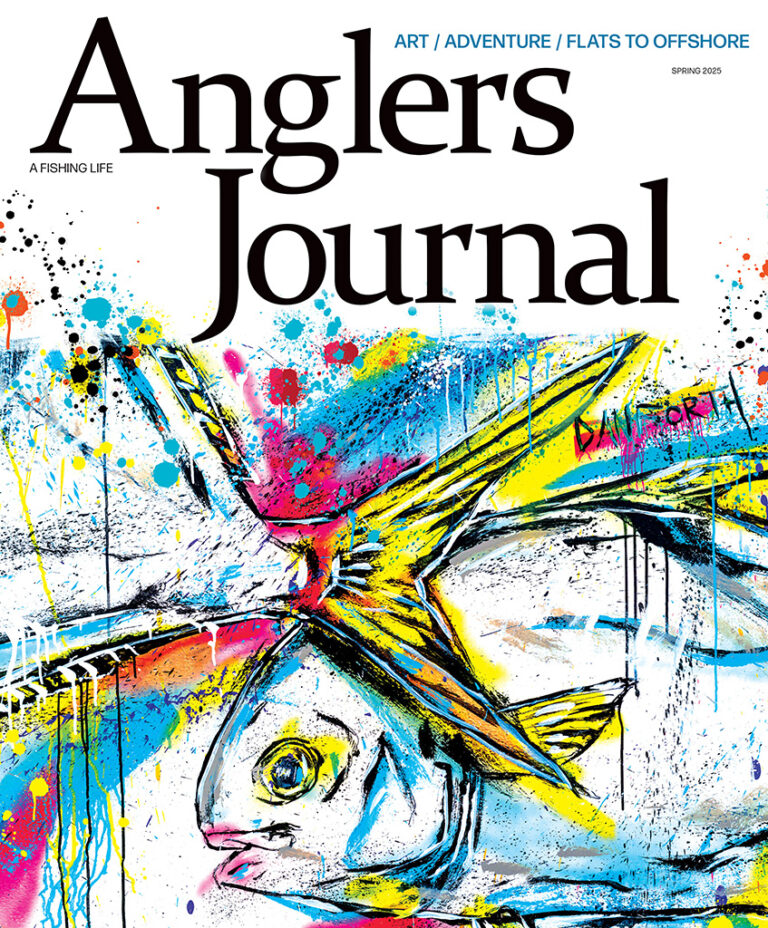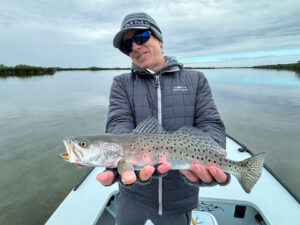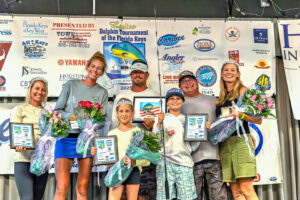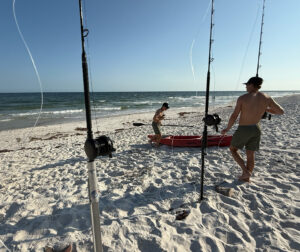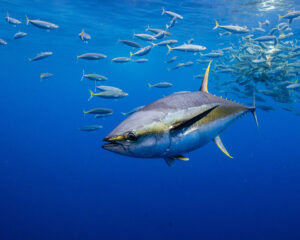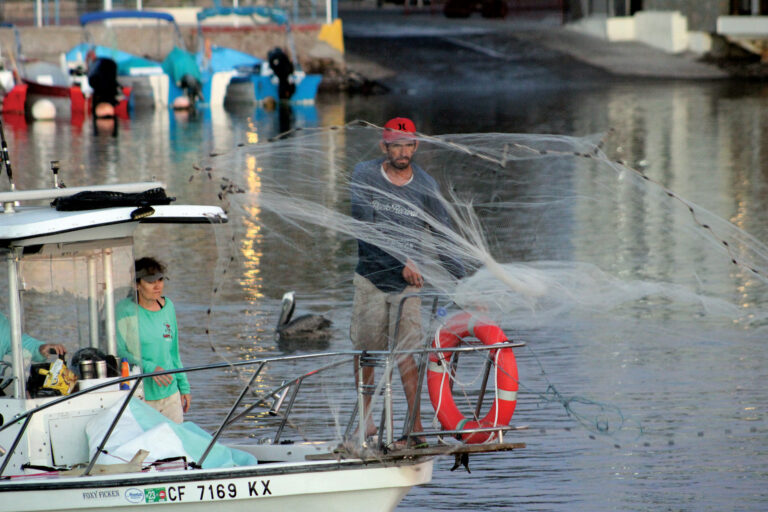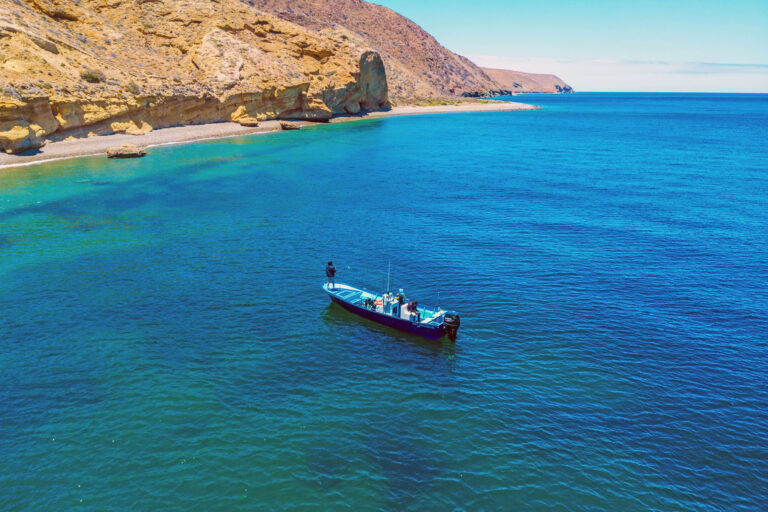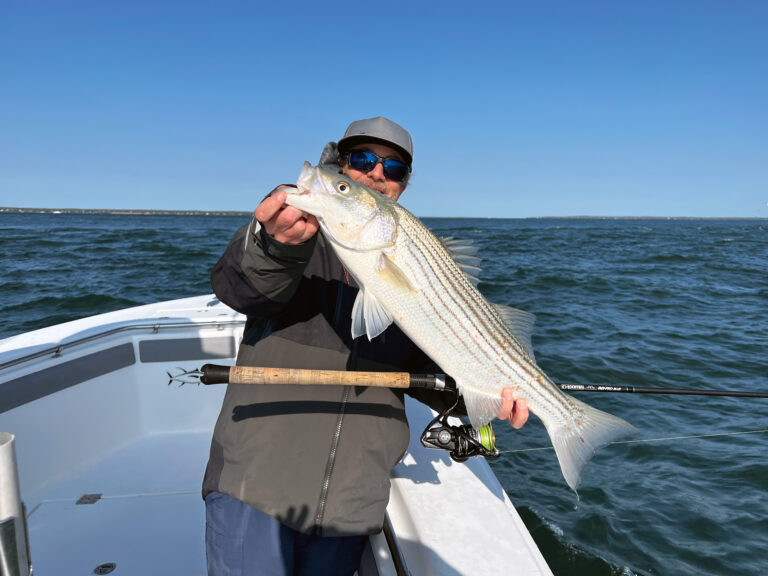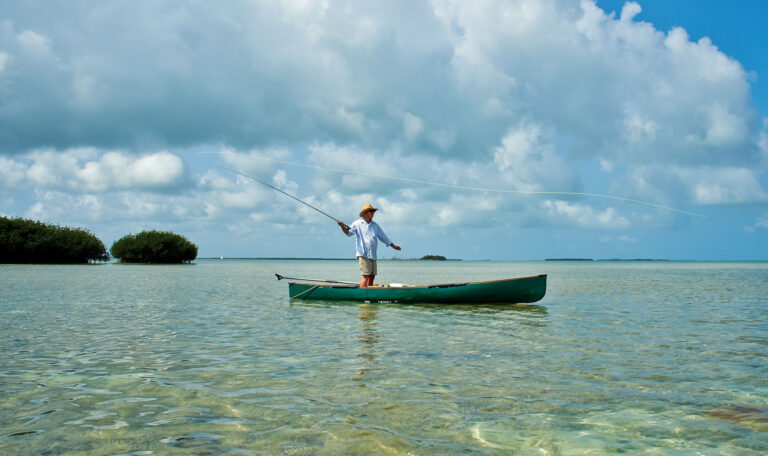“It came together while I was in Bali,” professional surfer and tarpon fiend Evan Geiselman says of his Gheenoe Lo Tide 25 purchase. “It’s not the most kitted-out,” he concedes, but the 16-foot boat’s lack of a center console and bait well keeps it light and high in the water. A simple craft with a tiller outboard, the boat rides dry as we prowl Mosquito Lagoon for tarpon, snook, redfish and, ultimately, whatever will eat a fly.
Fresh off a season that took him to the world’s best surf breaks, Geiselman, a New Smyrna Beach, Florida, competitor on the World Surf League’s Challenger Series, is always up for dawn patrol, in search of waves or fish. When the surf is less than outstanding, Geiselman hitches his Gheenoe to his Ford pickup, strings up fly rods, and heads to the grass flats and mangrove riverbanks of central Florida’s Indian River and Mosquito Lagoon.
 Geiselman is pondering how to combine his two passions, fly-fishing and surfing.
Geiselman is pondering how to combine his two passions, fly-fishing and surfing.Geiselman, who is 30, is hard to miss. Movie-star handsome and sun-kissed, he’s lean with a ropey, muscular build. But after 15 years on the tour and a recent spate of knee injuries, a newfound love of fly-fishing has him looking down different avenues that can accommodate both passions at once. “We go to all these spots to surf, and they’re all world-class fishing destinations, too. They go hand in hand,” he muses, contemplating a show about his two loves. “Getting blown out of a huge barrel and then cutting to trolling offshore, just outside the break? Come on!”
The Geiselmans are a surfing family if there ever was one. His father is a professional surfer turned shaper — he shapes all of Evan’s and his brother Eric’s boards. His mother, also a surfer, is a tireless archivist of his accolades and media features. Geiselman has spent half of his life competing, but he knows it isn’t in the cards for the long term.
 A Florida native, Geiselman is as comfortable on a poling platform as he is on a surfboard.
A Florida native, Geiselman is as comfortable on a poling platform as he is on a surfboard. Geiselman grew up spin-fishing in spoonfuls of water north of Mosquito Lagoon but wasn’t dedicated until some friends started busting out fly rods. He mocked them at first — why make fishing any harder? — but the art of the cast and the thrill of the hunt inspired him. If he didn’t have the bug as a kid, he’s surely been bitten now. Lately, he’s fishing more than surfing, unless there are exceptional waves. He’s also gotten himself a vise and the materials to fabricate flies for his favorite gamefish. They are as good as any you’d see in a fly shop. His old reliable is a purple-and-black, laid-up pattern. He could just as easily be a guide as a competitive surfer, but he’s far too aware of the toll that turning passions into an occupation takes.
Today Geiselman is fishing more lightheartedly. The tarpon aren’t around in numbers that would have him frothing, and we scout the flats to find worthy takers. He’s working the phone to gather intel. I express gratitude for his trust and assure him my lips are sealed. He doesn’t look worried; his trove of back-pocket pins on the chart is beyond safe, no blindfolding required. Geiselman has been home less than a week, and his only trip since returning was well before the recent rains and an approaching harvest moon. Conditions have changed.
 Once Geiselman took to fly-fishing, he began spending more time on the water.
Once Geiselman took to fly-fishing, he began spending more time on the water.Poling from mangrove to mangrove, we scan for signs of life mostly foreign to my Long Island Sound gaze: telltale shadows and piscine silhouettes beneath overhanging branches, entwined in semi-submerged driftwood and peering out from grass beds. Kingfishers flit, great blue herons squawk, alligators laze, manatees fan their tails, wild boars prowl, and the incessant swishing and kerplunking of jumbo mullet has my head swiveling before my brain catches up.
A glint of something catches my eye off the bow, and I flick a fly at it. One or two strips, and the fly stops dead. It’s like I’ve hooked a rock — all shoulders and no sprint. After the mud from the initial blowup clears, a black drum reveals itself. I’m not displeased, but Geiselman isn’t amused. Being a New Yorker, a black drum, especially on the fly, is something of a novelty, if not exactly a prized fish. “I don’t even cast at those things,” Geiselman demurs. I swallow my pride, and we pole on. Little do I know, I’ve done nothing short of bringing an albatross aboard the boat.
 While not the most glamorous species, the black drum was the only fish biting on this particular day.
While not the most glamorous species, the black drum was the only fish biting on this particular day.We edge up to a promising bank with enough snags to induce a panic for my open-water soul, but it is loaded with redfish and snook. We’ve accidentally inched over a border into protected NASA waters and are quickly met by a large, white chopper with a man hanging out the door who does not appear to be mincing words. The message is clear, the fish have spooked, and we book it.
We settle into another hole, and after an hour, another black drum comes aboard after snatching up a fly destined, we thought, for a snook. That’s to say nothing of a dozen or so lock-jawed redfish that turned their noses up at our offerings, wasting none of their Southern hospitality on me.
My Yankee disposition shows itself again when it’s my time to pole. Within five minutes, I have Geiselman tripping off the cooler and into the water. Where I come from, we don’t have much use for poling platforms, and I don’t have much experience with Gheenoes, which are basically an overbuilt canoe with a transom and an outboard. “The water’s actually really bad in here,” he grovels. It’s high and muddy. We snake through a tidal creek, the other end of which offers up pockets of clarity but few fish. Those that do show present tricky shots my casting can’t match.
 The professional surfer also ties his own flies.
The professional surfer also ties his own flies. After landing a tungsten-headed fly on the forehead of my fifth or sixth redfish, and just as many in mangrove branches, I am beyond fed up with my lackluster performance. I was once a passable fly angler, but leave it to the otherwise obsequious redfish to humble me once more. We wave our white flags, surrendering to the end-of-day outpost of victory or wound-licking: a waterside eatery favored by locals and out-of-towners known as JB’s Fish Camp. It is replete with alligator heads, fishing bric-a-brac and tchotchkes customary of the old, weird Florida that is sadly disappearing.
Steamed oysters on soda crackers with horseradish, lemon and hot sauce, fried flounder sandwiches, and a couple of ales nurse us back into good spirits and give us hope enough to devise a tentative evening outing. We part ways abuzz with high hopes for a bull red, over-slot snook or maybe even a tarpon bite at the inlet come nightfall. But as the evening hours descend, so do the thunderheads. The skies open and don’t let up until morning.
At sunrise, a quick scan of the beach for tarpon ripping through mullet doesn’t prove fruitful. We make plans to fish again. I invite him trout fishing and whitetail hunting at my cabin in the Catskills, and I am invited south again, provided I learn to pole a boat. Sure as the sun will shine, and the surf will rise, Geiselman will be back on the fish.

